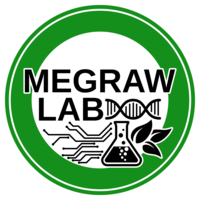| Title | A comparative study of ripening among berries of the grape cluster reveals an altered transcriptional programme and enhanced ripening rate in delayed berries. |
| Publication Type | Journal Article |
| Year of Publication | 2014 |
| Authors | Gouthu, S, O'Neil, ST, Di, Y, Ansarolia, M, Megraw, M, Deluc, LG |
| Journal | J Exp Bot |
| Volume | 65 |
| Issue | 20 |
| Pagination | 5889-902 |
| Date Published | 2014 Nov |
| ISSN | 1460-2431 |
| Keywords | Fruit, Gene Expression Profiling, Gene Expression Regulation, Plant, Oligonucleotide Array Sequence Analysis, Plant Growth Regulators, Time Factors, Transcription, Genetic, Vitis |
| Abstract | Transcriptional studies in relation to fruit ripening generally aim to identify the transcriptional states associated with physiological ripening stages and the transcriptional changes between stages within the ripening programme. In non-climacteric fruits such as grape, all ripening-related genes involved in this programme have not been identified, mainly due to the lack of mutants for comparative transcriptomic studies. A feature in grape cluster ripening (Vitis vinifera cv. Pinot noir), where all berries do not initiate the ripening at the same time, was exploited to study their shifted ripening programmes in parallel. Berries that showed marked ripening state differences in a véraison-stage cluster (ripening onset) ultimately reached similar ripeness states toward maturity, indicating the flexibility of the ripening programme. The expression variance between these véraison-stage berry classes, where 11% of the genes were found to be differentially expressed, was reduced significantly toward maturity, resulting in the synchronization of their transcriptional states. Defined quantitative expression changes (transcriptional distances) not only existed between the véraison transitional stages, but also between the véraison to maturity stages, regardless of the berry class. It was observed that lagging berries complete their transcriptional programme in a shorter time through altered gene expressions and ripening-related hormone dynamics, and enhance the rate of physiological ripening progression. Finally, the reduction in expression variance of genes can identify new genes directly associated with ripening and also assess the relevance of gene activity to the phase of the ripening programme. |
| DOI | 10.1093/jxb/eru329 |
| Alternate Journal | J. Exp. Bot. |
| PubMed ID | 25135520 |
| PubMed Central ID | PMC4203125 |
| Grant List | P30 ES00210 / ES / NIEHS NIH HHS / United States |
A comparative study of ripening among berries of the grape cluster reveals an altered transcriptional programme and enhanced ripening rate in delayed berries.
Submitted by Megraw Lab Admin on Tue, 2016-07-12 22:08

